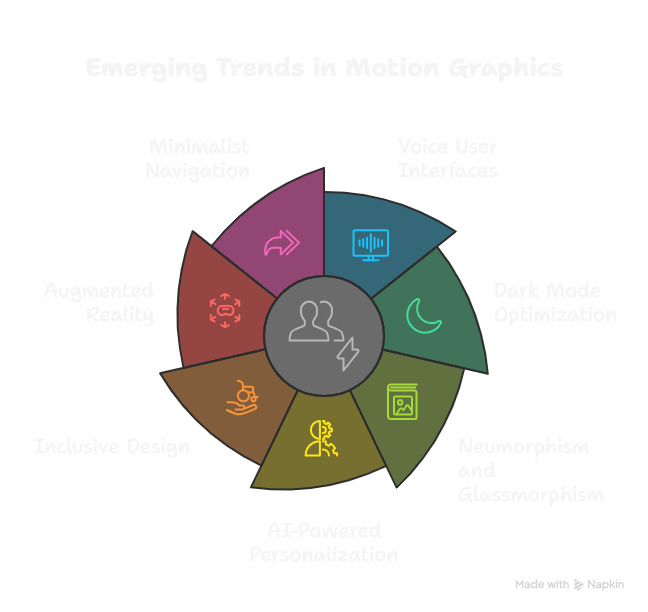In today’s hyper-connected world, UI/UX design isn’t just a buzzword—it’s the backbone of every successful digital product. Whether you’re building a mobile app, launching a website, or refining a SaaS platform, it determines how users interact, engage, and ultimately convert.
But what exactly is UI/UX design, and why does it matter so much?
Let’s break it down, explore its key components, and uncover how it shapes user behavior, brand perception, and business growth.
What Is UI/UX Design?
it stands for User Interface (UI) and User Experience (UX) design. While they’re often used together, they serve distinct purposes:
- UI design focuses on the visual layout—buttons, typography, color schemes, and interactive elements.
- UX design is all about the journey—how users feel when navigating your product, how intuitive the flow is, and how easily they achieve their goals.
Together, UI/UX design ensures that digital experiences are not only beautiful but also functional, accessible, and emotionally resonant.
Why UI/UX Design Matters
To begin with, great UI/UX design builds trust. When users land on a site or open an app, they subconsciously judge its credibility within seconds. A clean layout, intuitive navigation, and responsive design signal professionalism and reliability.
Moreover, effective UI/UX design boosts engagement. By reducing friction and guiding users through a seamless experience, it encourages longer visits, more clicks, and higher conversions.
Ultimately, investing in it means investing in user satisfaction—and satisfied users are more likely to become loyal customers.
Key Elements
Here are the foundational components that make up strong, along with LSI keywords to enrich your understanding:
- Wireframes and prototypes – Blueprinting the structure before development begins
- User research – Understanding user needs, behaviors, and pain points
- Information architecture – Organizing content for clarity and discoverability
- Interaction design – Crafting how users interact with elements
- Visual hierarchy – Guiding attention through layout and design
- Accessibility standards – Ensuring usability for all demographics
- Responsive design – Adapting layouts across devices and screen sizes
- Usability testing – Validating design decisions with real users
- Microinteractions – Small animations that enhance feedback and delight
- Navigation design – Structuring menus and pathways for ease of use
- Persona development – Creating fictional users to guide design choices
- User journey mapping – Visualizing the steps users take to complete tasks
- Call-to-action (CTA) placement – Strategically guiding users to act
- Typography pairing – Choosing readable and brand-aligned fonts
- Color psychology – Using color to evoke emotion and guide behavior
Each of these plays a vital role in crafting a cohesive and effective strategy.
Mobile-First and Responsive UI/UX Design
In today’s landscape, mobile-first thinking is non-negotiable. With the majority of users browsing on smartphones, it must prioritize responsive layouts and touch-friendly interfaces.
Elements like adaptive grids, fluid typography, and gesture-based navigation are essential for creating experiences that feel natural on smaller screens. A mobile-first approach also improves performance, accessibility, and SEO—making it a win-win for users and businesses alike.
Psychology in UI/UX Design
Interestingly, psychology plays a huge role in UI/UX design. Designers often use principles like:
- Cognitive load reduction – Simplifying tasks to avoid overwhelming users
- Fitts’s Law – Designing buttons and targets based on ease of access
- Hick’s Law – Limiting choices to speed up decision-making
- Gestalt principles – Creating visual harmony through proximity, similarity, and continuity
By understanding how users think and behave, it becomes more empathetic and effective.
Measuring Success
To evaluate impact, designers rely on metrics like:
- Bounce rate – Are users leaving too quickly?
- Time on page – Are they engaging with your content?
- Conversion rate – Are they completing desired actions?
- Task success rate – Can users achieve their goals easily?
- User satisfaction scores – Are they happy with the experience?
These insights help refine UI/UX design over time, ensuring continuous improvement and alignment with user needs.
Trends Shaping the Future of UI/UX Design
Looking ahead, several trends are redefining how we approach UI/UX design:

- Voice user interfaces (VUI) – Designing for smart speakers and voice commands
- Dark mode optimization – Offering visual comfort and battery savings
- Neumorphism and glassmorphism – Blending realism with minimalism
- AI-powered personalization – Tailoring experiences based on user behavior
- Inclusive design – Prioritizing accessibility and diversity from the start
- Augmented reality (AR) – Creating immersive, interactive experiences
- Minimalist navigation – Reducing clutter for faster decision-making
These innovations reflect a shift toward more intuitive, inclusive, and emotionally intelligent UI/UX design.
Tools for Modern UI/UX Design
To bring ideas to life, designers rely on powerful tools like:
- Figma – Collaborative interface design and prototyping
- Adobe XD – Wireframing, animation, and testing
- Sketch – Vector-based design for macOS
- InVision – Interactive prototypes and feedback
- Miro – Mapping user journeys and brainstorming
- Hotjar – Heatmaps and behavior analytics
- Webflow – Visual development with built-in CMS
These platforms streamline the UI/UX design process, making it easier to iterate, test, and launch with confidence.
Final Thoughts
UI/UX design is more than just pixels and pathways—it’s about empathy, strategy, and storytelling. It’s the invisible thread that connects users to brands, products to purpose, and ideas to impact.
Whether you’re designing a sleek app interface or refining a website’s user flow, strong UI/UX design ensures that every click, swipe, and scroll feels intuitive and meaningful.
for SAMPLES VISIT INSTAGRAM.
